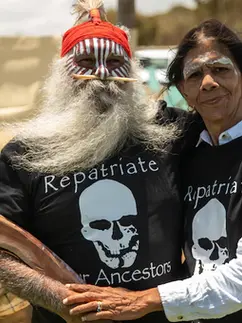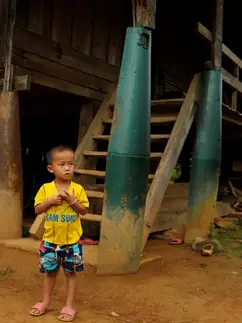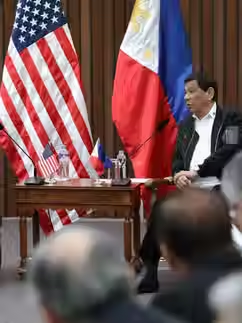Sri Lanka's economic crisis and the role played by foreign creditors
Soni Porwal

Sri Lanka is facing its worst economic crisis since World War II. This crisis has driven millions of people into poverty and is directly impeding on their basic human rights due to a shortage of food, medication and electricity. From April 2022, citizens protested for months against the government led by former President Gotabaya Rajyapaksha. The controversial drama of the former President fleeing the country, resigning and then another President being appointed exposes the political instability and fails to provide any solution to the economic crisis.
Sri Lanka was considered a ‘donor darling’ in the decades after independence with a relatively high standard of living, good social and medical services, an increasing tourism sector and robust economic growth. The civil war between majority Sinhalese Buddhists and Liberation Tigers of Tamil Eelum started in the 1980s and dragged on for two decades, ending in 2009. After the civil war, then President Mahinda Rajyapaksha took out foreign loans from both western institutions and China to increase economic growth and attract investors through infrastructure projects. In 2019, Mahinda’s younger brother, Gotabaya Rajyapaksha, was elected President. Under his rule, he cut taxes and banned the use of chemical fertilisers, which affected Sri Lanka’s textile and tea production industries. Furthermore, the 2019 Easter bombings followed by the COVID-19 pandemic hit the tourism industry, which had served as Sri Lanka’s main source of foreign exchange reserves. The Ukraine-Russia war caused a shortage in food and fuel supply, which acted as the last blow to the already crumbling Sri Lankan economy.
As of May 2022, Sri Lanka’s debt was USD 51 billion after all foreign exchange reserves dried up. In July, inflation rose to an all-time record high of 54.6 per cent while food inflation rose 81 per cent. Sri Lanka’s sovereign debt is mainly held by China, commercial institutes, India and Japan. In 2019, 56 per cent of the country’s debt was held by commercial lenders and private banks such as the World Bank and the Asian Development Bank. China individually holds about 10 per cent of the total country’s debt. On top of this, more debt is held by Chinese banks including the EXIM Bank of China and the China Development Bank, which brings Sri Lanka’s total debt to China to around 26 per cent.
Is China debt trapping Sri Lanka?
China’s investment in Sri Lanka during the Rajyapaksha brothers’ rule was mainly for strategic infrastructure projects to boost growth and bring in foreign investments as sources of revenue. China invested $1.4 billion in the Colombo Port City project, $104 million in Lotus towers and $209 million in Mattala Airport. All these investments were in large-scale infrastructure projects with increasing losses and limited opportunities to generate profit. Some economists believe that this modus operandi creates ‘debt-trap diplomacy’ where developing countries cannot repay their loans to Chinese institutions that help China acquire equity in such countries. China’s One Belt One Road (OBOR) initiative, now referred to as the Belt and Road Initiative (BRI), launched in 2013 and has facilitated more infrastructural investment in developing countries across Asia, Africa and the Pacific. An example of ‘debt trap diplomacy’ is Hambantota port in Sri Lanka where China’s Exim Bank offered $307 million to Colombo in 2007 for phase 1 and another $757 million in 2012 for phase 2 of the project. The port struggled to generate tax revenues for years and was losing money. This resulted in Chinese state-owned corporations China Harbour Engineering Company Ltd and China Merchants Group stepping in to jointly operate the port for 99 years with the Sri Lankan Ports Authority. Some economists contradict the view that China is creating debt traps. Instead, they claim that it was Sri Lanka’s last resort to accept China’s investment after they were turned down by Canada, the US and India. In 2015, Sri Lanka owed more to Japan, the World Bank and the Asian Development Bank than to China. However, one cannot overlook the millions of dollars invested by Chinese institutes when the Rajyapaksha brothers were in power.
Beyond Sri Lanka
Sri Lanka isn’t the only country with a failing economy and growing foreign debt. Developing countries in Asia such as Pakistan, Laos, Maldives, and Bangladesh are following similar trajectories. According to Laos officials, China undertook 813 projects worth more than $16 billion in 2021. Laos is facing a shortage of food and fuel supplies, which is concerning given one-third of the population lives in poverty. Laos’ public debt amounted to 88 per cent of its gross domestic product (GDP), owing almost half of it to China, according to reports from the World Bank. In July 2022, Pakistan’s inflation surged to 25 per cent and it too is struggling to meet fuel and food demands for its population. Pakistan’s current government is increasingly seeking negotiations with the International Monetary Fund (IMF) for economic bailouts to decrease its foreign debts.
The COVID-19 pandemic and the Ukraine-Russia war are increasing inflation, causing shortages in global supply and creating a further divide between low-and-middle-income countries. Such external factors increase the foreign debt of developing countries, hindering their ability to meet the basic human rights of their population. Any investment either from Chinese institutions or western institutions is going to increase their foreign debt and domestic political and economic policies offer limited scope and resolution. These foreign creditors are essential for developing countries including Sri Lanka to maintain their economy and flow of resources, however, ineffective economic and domestic policies are bound to collapse. With Sri Lanka’s new President Ranil Wickremesinghe trying to restore ‘law and order’ by arresting the protest movement’s leaders, there is no indication of an effective and progressive economic recovery for a country where the population is losing hope and seeking desperate measures to survive.
Soni Porwal holds a Master's in International Relations from the University of Melbourne. With extensive experience in marketing and communications, she is currently working for a private multicorporate. Her interests lie in climate change, public policy, and international trade.

















Comments